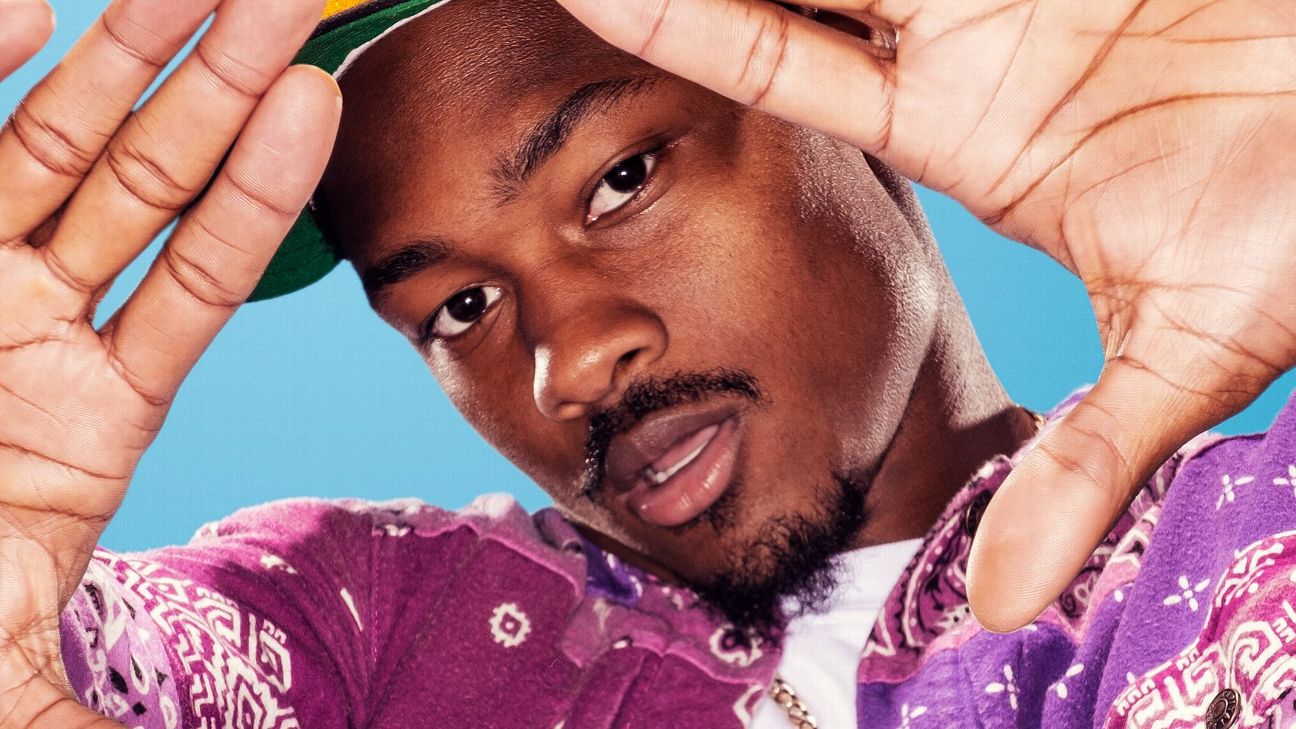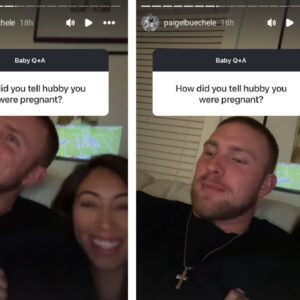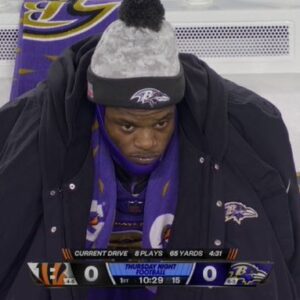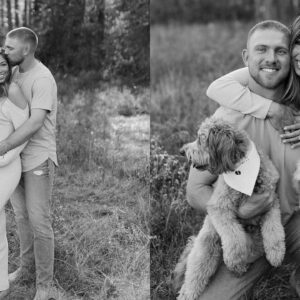IF YOU KNOW Diggs for one play, it is almost certainly the catch he made in January 2018, when he scored an out-of-nowhere, game-winning 61-yard touchdown as time expired and the Vikings beat the Saints in the NFC divisional round.

That catch, which has become known as the Minneapolis Miracle, is probably the greatest play in Vikings franchise history (the team has been around since 1961), and Diggs makes clear, right from the top, that he is undeniably thankful he was at the heart of it.
There is also, however, a certain fatigue when he talks about the play. His tone is just-the-facts, like he’s a court reporter reading from an incident report: “He threw it, I tried to make a play on the ball. The guy missed. I get to run into the endzone. … And, you know, like the movies say, the crowd goes wild. My teammates jump on me. History.”

This intonation isn’t surprising. Diggs is asked about the play a lot. This time he does add a wrinkle: how in the huddle, quarterback Case Keenum called that play three times in a row, finally saying before the third attempt, “I’m going to give someone a chance, all right?” “He kinda cut his eyes at me, but he didn’t look at me,” Diggs remembers, “so I was like, ‘Well, s—, it probably ain’t coming to me.'”
But there isn’t the excitement you might expect, and part of that is very likely because of all that came afterward. The Minneapolis Miracle seemed like one of those classics, the kind of play that links a player and his team forever; in fact, later that summer, the Vikings rewarded Diggs with a 5-year contract and more than $40 million in guaranteed money.

Instead, by the fall of 2019, Diggs was miserable, and unpacking that incredible deflation is important in understanding how he reached where he is now. “I was in a very, very dark place,” he says.
“Do you think you were depressed?” I ask, and Diggs hesitates. Then he curses through a smile. “I don’t know,” he says, then: “It’s kind of hard to say.” Finally, he says, “I wouldn’t say I was depressed. Things weren’t perfect in my life, but nobody has a perfect life. It was more so the mental stuff. … I believed in myself, you know? I wanted more for myself.”
That is the crux of where things derailed for Diggs with the Vikings. The Minneapolis Miracle happened to him when he was 24, and almost immediately it felt like he had already lived his defining moment, even if he was certain there should be something more. Anyone, let alone a confident professional athlete who imagines himself having a long career in the NFL, would struggle to process the idea that his legacy might have been sealed in the first act of his life’s play.

In 2019, the Vikings also turned over their offense to Kevin Stefanski, who preferred to focus on the running game and the emergence of Dalvin Cook as one of the league’s top backs. Suddenly Diggs’ life became two trains going in opposite directions: He was sure he could top the unbelievable moment he’d already experienced, but he was trying to do it for a team that, despite paying him well, wasn’t much interested in giving him the ball. After averaging 10 targets per game in 2018, Diggs saw fewer than half that — just 23 total — in the first five weeks of the 2019 season.
Even through his struggles, Diggs says he never had a real issue with any of the Vikings players (including quarterback Kirk Cousins), and he remains close with many of his old teammates; Adam Thielen reached out recently with a question about shoulder pads because the two receivers wear the same type.
“People have a common misconception that I don’t love my old team,” Diggs says. “I have nothing but love and respect for those guys. But where they were and where they were headed … in my eyes, it wasn’t going to be in the best interest of my career. As a receiver, if you want to have success, you’ve got to catch the ball.”
In truth, though, Diggs’ biggest problem wasn’t the lack of touches; it was that he felt his conversations with Vikings officials were inauthentic. He didn’t feel heard.
“I’m not gonna say [they were] peeing on me and telling me that it’s raining,” he says. “That’s a little bit harsh.” He considers his words. “But something like that. … Once you don’t have trust with a person, it’s hard to do business.”
It should be said: Diggs had his moments in all this too. He shied away from throwing tantrums around the media, though he did publish a slew of fairly unsubtle social media posts that many who were connected to the Vikings took as signs of his obvious displeasure. One read, “If I can’t make it with you, I’ll make it without.” Another: “You know what they say … what goes around comes around.” The low point came in the days after a September 2019 loss to the Bears, when Diggs skipped work without an excuse, drawing a $200,000 fine from the team.
Looking back now, Diggs offers a halfhearted explanation for the social posts (“Some of those were song lyrics”) and says, “I don’t necessarily regret” blowing off a practice and some team meetings, although “maybe part of me wishes I had that money back.”
In the end, Diggs says he just felt trapped. “That was my only way of saying something at that time,” he says. “I just didn’t feel like I had that belief from them anymore, you know?”
“I love my old team. But where they were headed … it wasn’t gonna be in the best interest of my career. As a receiver‚ if you want to have success‚ you gotta catch the ball.”
– Stefon Diggs
As each day passed, it seemed less and less likely that Diggs would play out his five-year deal in Minnesota. The Vikings said repeatedly that they didn’t want to trade Diggs, but on March 16, word came: He was going to the Bills, for a massive haul of four draft picks, including a first-round selection. (“That’s our first-round pick,” Bills GM Brandon Beane said of Diggs in explaining why he was willing to part with so much.)
Minnesota’s public stance was that Buffalo’s offer was simply too good to pass up. “Diggs didn’t have to go,” coach Mike Zimmer told Rich Eisen earlier this year about the trade, which has worked out equally well for the Vikings after drafting Justin Jefferson (who’s already topped 1,000 yards on the season himself) in the first round. “We really didn’t have any intention of trading him. Quite honestly, he put out a couple tweets, and there was some things going on there, but Stefon works extremely hard, he practices like crazy, he wants the ball like all receivers do. Really what happened was Buffalo came in and gave us all those picks.”
Through his final months in Minnesota, Diggs leaned on his mother, Stephanie, for support. So after he learned of the trade from his agent, he called her to tell her he was headed to Buffalo.
“My mom was screaming at the top of her lungs,” Diggs remembers. “Originally, she said, ‘I want some of them chicken wings!'” He laughs. “She was happy for me. She was happy for a new beginning.” Before they hung up, Stephanie told her son, “I know you’re going to handle yourself extremely well, and I’m looking forward to it.”
Diggs laughed. “You ain’t the only one,” he said.

“Day one, since I reached out, he’s been nothing but great,” Allen says. “I’m super happy that we traded for him.” Christian Petersen/Getty Images
DURING THE OFFSEASON, Diggs put himself through what he calls a “personal reevaluation.” The goal, he says, was “self-healing,” and the process involved several days of reflection, isolation and reading. One of the books he chose was “The Alchemist.”
The novel, written by Brazilian Paulo Coelho, is a tale about a young shepherd in Andalusia who literally follows his dreams. The story focuses on the importance of destiny and belief. It spoke to Diggs. “It’s probably the best book I’ve ever read,” he says.
The idea that each of us has a personal legend we should be chasing — chasing, as opposed to idly hoping will someday happen — resonated even more after the trade to Buffalo. Diggs had fought his way into the league as a fifth-round pick out of Maryland in 2015, and even during the slog of 2019, when he caught the fewest passes since his rookie year, he made the most of them, totaling 1,130 yards. Now in Buffalo, he would push forward in a different way. This time and place was about self-direction.
In the days after the deal was announced, Diggs found himself wanting to do so much: talk to his new coaches, look at his new playbooks, meet his new receiving corps and, more than anything, get to know his new quarterback. The only problem was that a pandemic had just enveloped the world.
There would be no OTAs. No minicamps. No official team activities of any kind. And Diggs couldn’t just hop on a plane and show up to hang out with Allen either. He had to get creative.
Diggs’ brother, Trevon, who plays cornerback for the Dallas Cowboys, had been really into video games for a while and was always asking Diggs to play. Diggs never was all that interested, and he admits he would even mock Trevon and others for the gear they used. “Like, ‘Oh, you got a headset on? You too serious about it,'” he says, laughing.
Only then Diggs learned that Allen was a gamer. And he got a headset of his own.
“He just kept saying, ‘He’s real, bro.’ He could tell it was going to be special. He just kept saying it to me over and over. ‘He’s real, bro. He’s real.’”
– Trevon Diggs on his brother’s relationship with Josh Allen
The game that Diggs and Allen played together, Call of Duty: Warzone, is pretty much what you’d imagine: a mission-based game with lots of weapons, artillery and shooting. Diggs, as a relative novice, spent a lot of time dying (or being “downed,” to use the vernacular), but that actually turned out to be a good thing.
While most players simply fight on if someone they know is downed, Allen always retreated from whatever battle he was in — even if he had an advantage — to run over to Diggs’ avatar and resuscitate him.
“It didn’t matter if I was getting shot or not,” Allen says. “I was going to revive my guy.”
Allen’s commitment to helping Diggs ran so deep it infuriated Trevon, who sometimes played with them. Turns out Allen’s caring approach to his new receiver isn’t the ideal strategy for others playing in the game who might have been counting on Allen to, say, spray a hail of bullets at a passing ATV.
“I had to stop playing with them,” Trevon says. “It was getting ridiculous.”
Diggs and Allen spent hours on the game, talking to each other on their headsets and bonding over their repeated attempts to dominate whichever console heroes tried to obliterate them on that particular day.
When the two finally met face to face at the Miami workout, Diggs felt like they weren’t starting from scratch.
Trevon, who was staying with Stefon in Florida, giggles when he recalls how excited his brother was about Allen after getting back home from the first in-person session with his new internet buddy.
“He just kept saying, ‘He’s real, bro,'” Trevon says. “They’d played games for a while and now they’d done passing and he felt like he knew. He could tell it was going to be special. He just kept saying it to me over and over. ‘He’s real, bro. He’s real.'”





